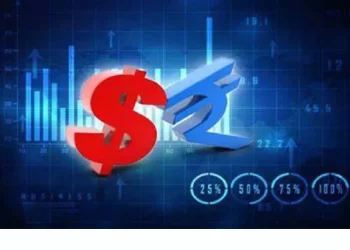PayPal USD is a cryptocurrency introduced by PayPal, one of the largest digital payment platforms in the world. It is a stablecoin, meaning its value is tied to a stable asset, in this case, the US dollar. This ensures that the price of PayPal USD does not fluctuate wildly like other cryptocurrencies such as Bitcoin or Ethereum. Instead, it remains steady, with one PayPal USD always equal to one US dollar.
PayPal USD is built on blockchain technology, which allows for secure and transparent transactions. It is designed to make digital payments faster, cheaper, and more efficient. Users can send and receive PayPal USD just like they would with traditional PayPal transactions, but with the added benefits of cryptocurrency, such as lower fees and instant transfers.
How PayPal USD Works
PayPal USD operates on the Ethereum blockchain, a widely used platform for digital currencies. Being an ERC-20 token, it follows the same standards as many other cryptocurrencies on Ethereum. This makes it compatible with various wallets and exchanges that support Ethereum-based tokens.
When a user buys PayPal USD, the equivalent amount in US dollars is held in reserve by PayPal. This ensures that the stablecoin is fully backed and can be redeemed at any time. The reserves are regularly audited to maintain trust and transparency.
Transactions with PayPal USD are recorded on the blockchain, making them secure and verifiable. Unlike traditional bank transfers, which can take days to process, PayPal USD transactions are completed almost instantly. This is particularly useful for cross-border payments, where traditional methods are often slow and expensive.
Benefits of Using PayPal USD
One of the main advantages of PayPal USD is its stability. Unlike Bitcoin, which can experience huge price swings, PayPal USD remains pegged to the US dollar. This makes it a reliable option for everyday transactions, savings, and investments.
Another benefit is low transaction fees. Traditional payment methods, especially international transfers, often come with high charges. PayPal USD reduces these costs significantly, making it an attractive option for businesses and individuals.
PayPal USD also offers speed and convenience. Since it operates on blockchain technology, transactions are processed quickly, often within seconds. This is much faster than traditional banking systems, which can take several business days to complete transfers.
Additionally, PayPal USD is integrated into the existing PayPal ecosystem. This means users do not need to learn a completely new system to use it. They can buy, sell, and hold PayPal USD directly within their PayPal accounts, making it accessible even to those who are new to cryptocurrencies.
Risks and Challenges
Despite its advantages, PayPal USD is not without risks. One concern is regulation. Governments around the world are still figuring out how to regulate stablecoins. Changes in laws could affect how PayPal USD operates in different countries.
Another risk is centralization. Unlike decentralized cryptocurrencies such as Bitcoin, PayPal USD is controlled by a single company—PayPal. This means users must trust PayPal to manage the reserves and maintain the stability of the coin. If PayPal faces financial or legal issues, it could impact the value and usability of PayPal USD.
Security is also a consideration. While blockchain technology is generally secure, no system is completely immune to hacking. If a user’s PayPal account is compromised, their PayPal USD holdings could be at risk.
Finally, adoption is still growing. Not all merchants accept PayPal USD, which limits its use for everyday purchases. However, as more businesses begin to support it, this challenge may decrease over time.
How to Buy and Use PayPal USD
Buying PayPal USD is simple for those who already have a PayPal account. Users can purchase it directly through the PayPal app or website using their linked bank account or debit card. Once purchased, the PayPal USD is stored in the user’s digital wallet within PayPal.
From there, users can send PayPal USD to friends, family, or merchants who also accept it. They can also convert it back to US dollars at any time. Some users may choose to hold PayPal USD as a way to store value without worrying about price fluctuations.
For those interested in trading, PayPal USD can be moved to external cryptocurrency exchanges. This allows users to trade it for other digital assets. However, PayPal itself does not support direct trading of other cryptocurrencies besides Bitcoin, Ethereum, Bitcoin Cash, and Litecoin.
PayPal USD vs. Other Stablecoins
PayPal USD is not the only stablecoin in the market. Others, such as Tether (USDT), USD Coin (USDC), and Dai (DAI), also exist. Each has its own features and benefits.
Tether is the most widely used stablecoin but has faced scrutiny over its reserve transparency. USD Coin is known for its strong regulatory compliance and full backing by cash and short-term US Treasury bonds. Dai is unique because it is decentralized, meaning no single entity controls it.
PayPal USD stands out because of its integration with a major payment platform. This gives it an edge in terms of accessibility and ease of use. However, it is still new compared to other stablecoins, so its long-term success remains to be seen.
The Future of PayPal USD
The introduction of PayPal USD is a significant step in bringing cryptocurrencies into mainstream finance. As more people and businesses adopt digital payments, stablecoins like PayPal USD could become a standard way to transfer money.
PayPal’s large user base gives it a strong advantage. If even a fraction of PayPal’s customers start using PayPal USD, it could quickly become one of the most widely used stablecoins.
In the future, PayPal may expand the use of its stablecoin to more services, such as merchant payments, remittances, and even lending. As blockchain technology evolves, new features could be added to make PayPal USD even more useful.
Conclusion
PayPal USD is a stablecoin designed to combine the benefits of cryptocurrency with the stability of the US dollar. It offers fast, low-cost transactions and is easily accessible through the PayPal platform. While there are risks, such as regulatory challenges and centralization, its potential for widespread adoption is strong.
As the financial industry continues to embrace digital currencies, PayPal USD could play a key role in shaping the future of payments. Whether for everyday transactions, savings, or investments, it provides a reliable and efficient option for users around the world.
Related topics:



































